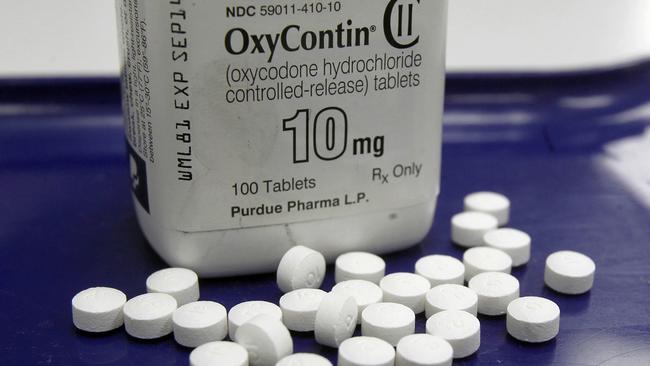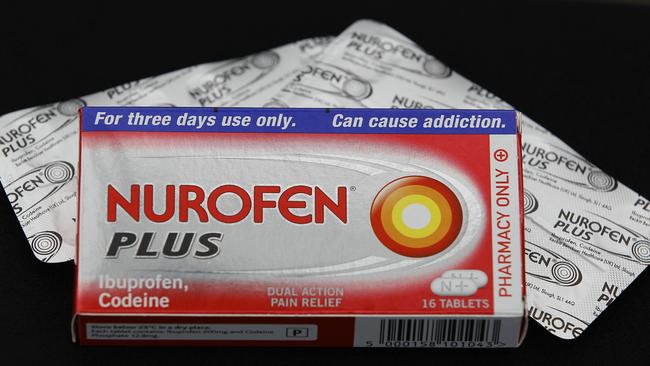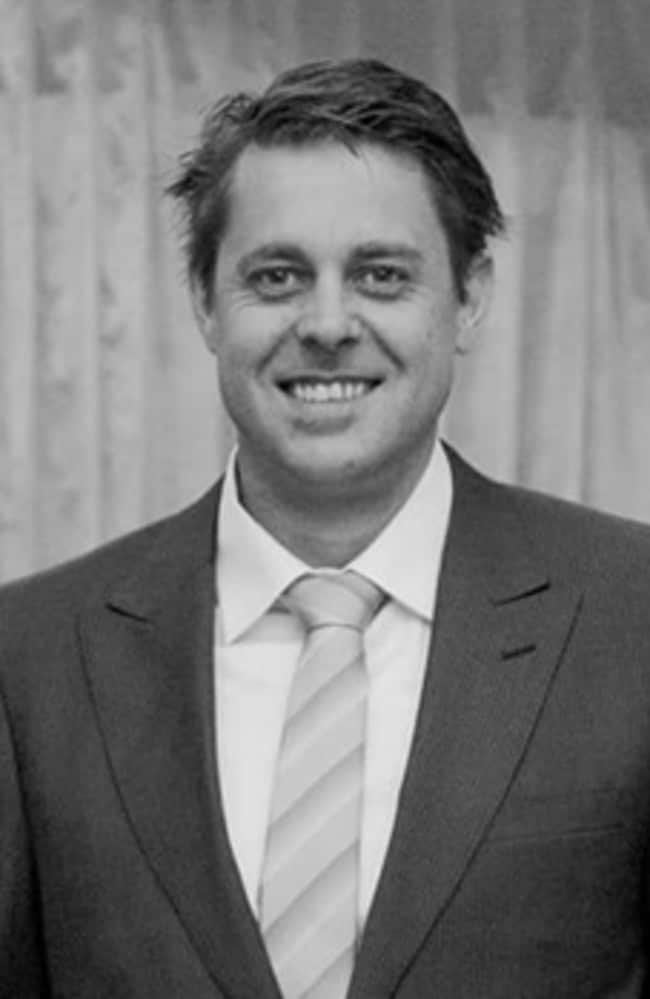- Joined
- Mar 9, 2005
- Messages
- 33,319
What do you guys think? I tend to think this is largely scare mongering, but it wouldn't surprise me if Australia followed suit with America on this as with everything else.
-source
Deadlier than heroin: The crippling drug crisis Australia is ignoring
Australia is facing a crisis that’s hiding in plain sight. It’s affecting 750,000 people and snares 50,000 new victims each year.

Experts are concerned about the rising impact of Australia’s prescription opioid addiction issue. Picture: University of Colorado.Source:Supplied
Australia is facing a drug addiction crisis that’s hiding in plain sight, with 750,000 people already hooked on substances that are deadlier than heroin and which snare 50,000 new victims each year.
The number of powerful opioid medications prescribed by doctors has boomed in recent years and so too have deaths from the legally available pills, which have more than doubled in a decade.
But the alarming public health issue has largely flown under the radar until recently, as authorities battled more publicised dangerous substances like methamphetamines.
Turning Point clinical director and addiction treatment doctor Mathew Frei said prescription opioid deaths in Australia had now “equalled, if not surpassed the heroin crisis” of the late 1990s.
“The number of people dying in Australia is quite significant,” Dr Frei told news.com.au.
Medications like oxycodone, endone, morphine, codeine, fentanyl, tramadol and pethidine are being prescribed for pain conditions in huge numbers, often at high doses and for extended periods of time.
The United States and Canada are in the grips of a catastrophic prescription opioid addiction epidemic, which experts in Australia say should serve as our canary in the coal mine.
“In the US, this is probably the biggest public health issue in terms of mortality in the past half century,” Dr Frei said.
“Australia is a bit behind what’s happening in the United States, but only by a few years. We’re not at that scale now but I don’t think we’re not far off.”

Extremely potent drugs like OxyContin are being prescribed at alarming levels in Australia. Picture: APSource:AP
A staggering 14 million scripts for powerful pain killers were written by doctors in 2017.
Of those taking them, the organisation Addiction Centre estimates that one-in-10 could become addicted to their medication.
A coronial inquest in Sydney last year heard alarming evidence that some 750,000 people are currently dependent on prescribed opioids across the country.
And research by Monash University estimated that 50,000 new people become long-term users of dispensed pain killers each year, putting them at risk of addiction.
Drug and alcohol treatment specialist Jack Nagle, who runs the online support program Realdrugtalk, said people usually start taking opioid pills for legitimate reasons but most underestimate the power and potency of them and can quickly become hooked.
“It’s the biggest problem with it,” Mr Nagle said.
“With opioid medications, particularly things like endone and oxycodone, they’re really powerful stuff. It’s very similar to taking a hit of heroin. I don’t think people realise that.”

The government has regulated the supply of codeine, which is no longer available without a prescription in Australia. Picture: APSource:AAP
Mr Nagle said prescription pill addiction can be a pathway to the abuse of illicit substances like heroin.
“We see it all the time,” he said.
“People become addicted to prescription drugs, their doctor cuts them off, they doctor shop to keep getting it, and then the supply runs out.
“They’re left addicted and so they go to the street. They start using the illegal version of the drug.”
Alcohol and Drug Foundation national policy manager Geoff Munro said deaths from prescription opioids have now overtaken fatalities from heroin overdoses.
“It’s a very serious issue,” Mr Munro said.
“In 2006, there were about 400 deaths (from prescription opioids) and in 2016 there were more than 1000. That’s an indication of just how big the problem is.”
There were 1808 drug-induced deaths in Australia in 2016 and two-thirds of them were linked to prescription opioids, according to the Australian Bureau of Statistics (ABS).
Of those deaths, more than 30 per cent were related to prescription painkillers like oxycodone and 36 per cent were linked to benzodiazepines like Valium.
Deaths were both accidental and intentional, however the majority were not the result of a deliberate overdose, the ABS figures showed.
“In 2016, an individual dying from a drug-induced death in Australia was most likely to be a middle-aged male, living outside of a capital city who is misusing prescription drugs such as benzodiazepines or oxycodone in a polypharmacy (the use of multiple drugs) setting,” an ABS report concluded.
The Australian Institute of Health and Welfare said deaths involving opioids have doubled in the past decade.
Overdose from prescription medication has surpassed road deaths in most states.

Daniel Bogart who died from opioid drug use. Picture: SuppliedSource:Supplied
Sydney man Daniel Bogart was on a ski trip with friends in 2016 when he went to sleep on Christmas Eve and never woke up.
The 40-year-old took the medication he had been prescribed by his GP — oxycodone for the pain experience from pancreatitis and Valium for an anxiety condition.
Despite taking the recommended dose, the combination of the two proved lethal, his mother Sally Wilkinson told The Daily Telegraph last year.
“He had sub-therapeutic levels in his blood — lower than the recommended dose, but there is a massive risk of a multiplier effect when the drugs work together,” Ms Wilkinson told the newspaper.
“People don’t realise the massive risk of dying if you combine these drugs. We still have ‘white coat syndrome’ where we do not like to ask questions of doctors because we are conditioned to think what they are telling us is correct.”
Doctors call for codeine prescription management


A report released by Deloitte this week found more than three million Australians suffer some form of chronic pain.
“And somewhere around three to four million people were prescribed opioids in 2016,” Mr Munro said. “Not all of them would be addicted, you would hope, but it does show the level of risk.”
For far too many people, potent opioids are prescribed for long-term symptom management when the drugs should only be used in short-term or terminal cases, Mr Munro said.
“The situation in the US and Canada shows us that it’s possible for very large numbers of people to get into trouble with these drugs.” he said.

Addiction specialists warn that opioid addiction is often a pathway to the abuse of illicit substances like heroin.Source:Getty Images
A growing number of experts believe prescription opioids should be restricted to managing cancer pain or acute, short-term pain.
Monash University researcher Samanta Lalic said the safest and most effective treatment of chronic pain in “many cases” was a combination of exercise, physiotherapy and non-opioid pain medication.
“For the treatment of chronic pain, we need to change prescribing culture and raise the level of awareness of other treatment options among patients,” Ms Lalic said.
“The goal of care, treatment expectations and intended duration should be agreed upon by patients and prescribers prior to opioid initiation.”
Effectively treating an addiction to prescription opioids is a challenge, experts admit.
Those most likely to have a dependence are “hidden” — they’re older Australians living in the suburbs or regional areas, many of whom might not appreciate that they’re hooked.
“A lot of people find it difficult to cease using because the underlying pain or problem is there,” Mr Munro said.

Prescription opioids are highly addictive and incredibly dangerous, experts warn.Source:Getty Images
For those addicted to prescription opioids, coming off them could be comparable to detoxing from heroin, he said.
“It’s important to know that health is available through their GP, community health centres and support services. We have information online and via out hotline, which is 1300 85 85 84.”
University of New South Wales Drug Trends program lead Amy Peacock said authorities need to expand the focus on treatment for those already battling addiction.
“One of the most important and effective strategies to reduce overdoses is increasing the
availability of opioid substitution therapy for people who have developed opioid dependence
and encouraging engagement and retention in this treatment,” Dr Peacock said.
For those who do seek help, the treatment is usually via a pharmacotherapy drug such as methadone or buprenorphine, which can reduce cravings and withdrawal symptoms.
Data released this week by the Australian Institute of Health and Welfare, which took a single day snapshot in 2018 of pharmacotherapy, found 50,000 people received treatments.
How many of those sought help for a prescription opioid dependency is unclear as 40 per cent did not specify the drug they were addicted to.
However, 15 per cent of patients did indicate a dependency on some kind of prescription opioid, from oxycodone to morphine.
-source
